Were some people really born with a silver spoon in their mouth? When it came time to dining, and entertaining, royals didn’t just grab a quick bite to go. Every meal had to be worthy of a king, right down to the choice of the plates. But the favorite dinnerware of Europe’s royals and aristocrats might surprise you.
Catherine the Great of Russia
She started out as an impoverished German princess and ended up as the absolute ruler of the world’s largest empire. She expanded Russia west into Poland, south to the Black Sea and Crimea, and east to Alaska. She was also a famous patron of the arts and brought the European Enlightenment to Russia. To her contemporaries, she was as awe-inspiring as a Roman goddess:

Catherine the Great is often associated with Royal Copenhagen’s Flora Danica dinnerware, an over the top, no holds barred collection of over 1800 hand-painted, gold gilded pieces commissioned especially for her:
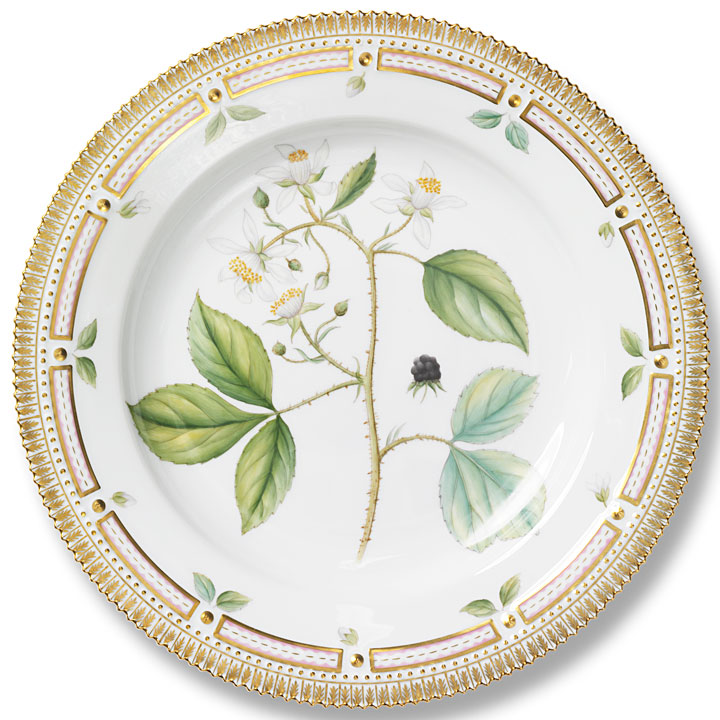
Sadly, though, she did not live to see its completion. See our story of Catherine the Great and Flora Danica that’s full of royal-worthy intrigue for more details.
Lord Nelson
England’s hero during the Napoleonic Wars, Lord Horatio Nelson time and again thwarted the powerful French in naval battles from the Nile delta to the frigid Baltic sea. He gave his life in the decisive victory at Trafalgar that finally saved England from invasion. For that, the grateful English nation placed him high up in a column in Trafalgar Square in the heart of London. (The French hadn’t forgotten him either: They protested when the Eurostar train from Paris to London ended in Trafalgar station and got it switched to St. Pancras instead.)

But Lord Nelson is no crusty crude sailor. After winning the naval Battle of Copenhagen in 1801, he came ashore and bought Royal Copenhagen dinnerware — probably a pattern very much like the traditional Blue Fluted — for his beloved Lady Hamilton back in England:
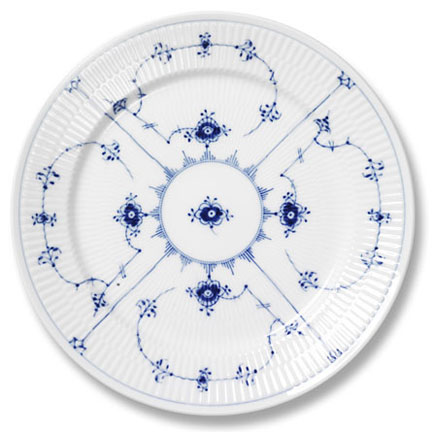
Empress Eugenie of France
Famous for her beauty, Eugenie de Montijo caught the eye of Louis Napoleon at a ball when he had just become President of France. “What is the road to your heart?” asked the dashing (and serial womanizing) President. “Through the chapel, Sire,” she responded. And when he aspired for an office even higher than President, she became Empress. During her reign, Paris became the beautiful city that we know today, with limestone mansions lining wide boulevards, elegant couples promenading, and ever grander balls and fetes.

Haviland created a special dinner service for Empress Eugenie and Emperor Napoleon III, which is now displayed at the Haviland Museum in Limoges, Frances. Closely based on this dinner service is the Haviland Imperatrice Eugenie pattern:
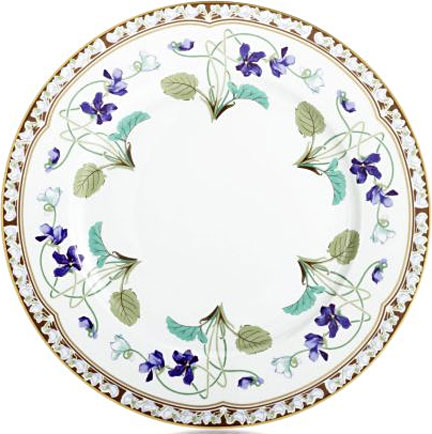
Funnily enough, President Jacques Chirac of France was also a fan of the Imperatrice Eugenie pattern, while his successor Nicholas Sarkozy preferred the more modern Haviland Claire de Lune pattern.
Queen Victoria of England
Victoria became Queen shortly after turning 18 and went on to rule for over 63 years. England reached the zenith of its glory during her reign, with industrialization, new technologies, and economic growth that lifted the country into the modern age. Abroad, the British dominions spanned every corner of the globe, until the sun never set on the British Empire. Personally, she was the personification of prudence and virtue of her time:

In 1851, the first World’s Fair, with its famous Crystal Palace, was organized in London to show off the wealth and progress of the British Empire. During the Fair, Queen Victoria did a little shopping and bought a large dinner set for the Windsor Castle. She chose a “Far-Eastern” pattern by the Hungarian manufacturer Herend that depicts colorful butterflies and peonies. With this pattern Herend won the Grand Prix award, and the Herend Queen Victoria Dinnerware has been produced ever since:
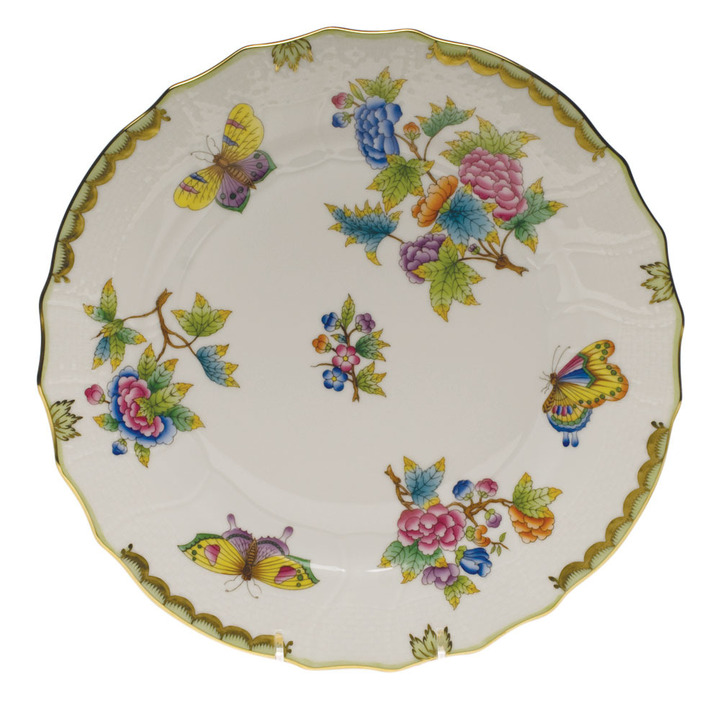
Baron Rothschild
Prominent since the 1740’s, the Rothschild banking family had the largest private fortune in the world in the 19th century, and some believe it may indeed be the largest fortune in modern history. They were one of the first international banks, with branches in London, Paris, Vienna, Naples, and Frankfurt all controlled by family members. They financed the English war effort during the Napoleon Wars, the newly independent country of Brazil, the industrialization of England, and at one point owned most of Mayfair in London. In 1847 Anthony de Rothschild of the London branch was made a Baronet in England, in addition to being a baron of the Hapsburg Austro-Hungarian Empire by birth:

Twelve different motifs portray a 19th century tale about Baroness Rothschild, who lost her pearl necklace in the garden of her Vienna residence. Several days later it was found by her gardener, who saw birds playing with it in a tree.
One day in the 1850’s, Baroness Rothschild lost her pearl necklace in the garden of her Vienna home. A few days later it was found by her gardener, who saw birds playing with it in a tree. Since then, Baron Rothschild and his family developed a special love for birds, which symbolized love and relationships. He ordered a bird-patterned Herend porcelain dinnerware collection for himself and became important patrons of Herend in the years to come, so the Herend Rothschild Bird Dinnerware is named in the honor of him and his family:
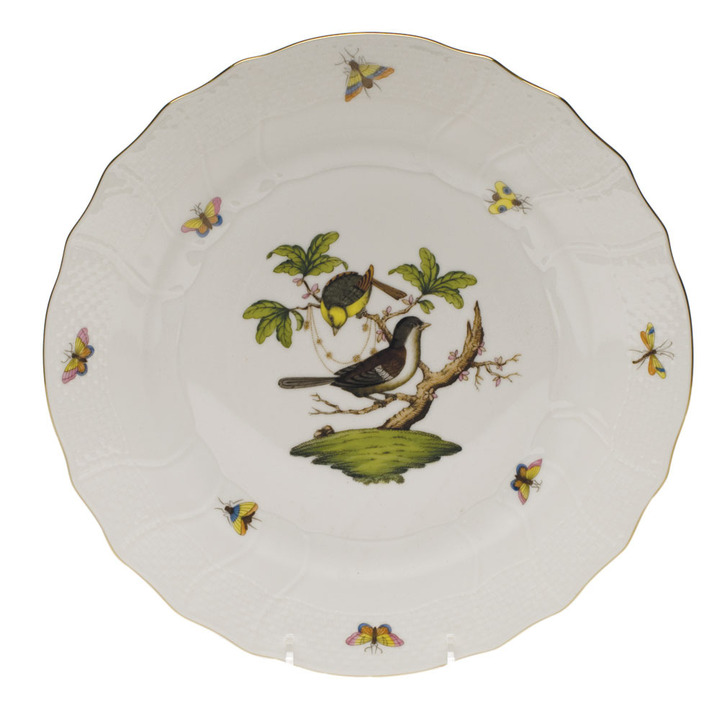
Franz Joseph I of Austria
Like Queen Victoria, Franz Joseph I also became the ruler of a large empire at age 18. He ruled over the Austro-Hungarian Empire of central and eastern Europe as the one of the last descendants of the ancient Hapsburg family. He was intensely religious and dedicated his life to doing the best for his subjects. I have personally seen the small desk in the Schonbrunn Palace of Vienna where he put in 12-, 14-, even 16-hour days reviewing court appeals, city lighting proposals, and all the minute details of his vast country. For his efforts the diverse peoples of his realm revered him as their father…then grandfather figure:

Even though he could’ve had every extravagance, the Emperor loved the simple yet regal Herend Laurel Garland Dinnerware, which was used by him personally in the Buda Castle of Budapest, Hungary:
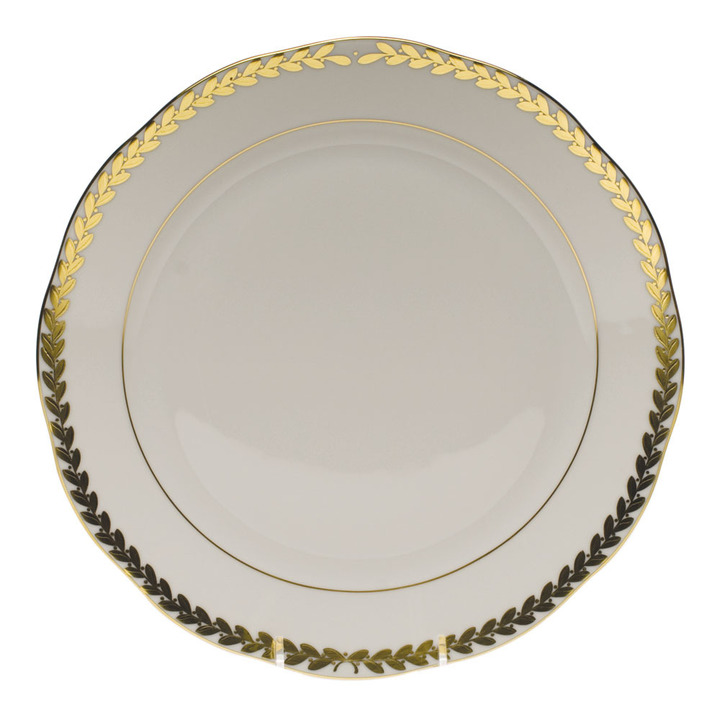
Empress Elisabeth of Austria
The wife of Emperor Franz Joseph I, Empress Elisabeth of Austria was exceptionally tall and fit, and she adhered to a regimen of diets and exercises that we would be familiar with. She felt stifled by the rigors of court life and rituals, not to mention a controlling mother-in-law, so she spent most of her time in Budapest instead of Vienna, where she enjoyed equestrian sports.

When she was married to Franz Joseph I, their Hungarian subjects gave them the Gödöllő Castle near Budapest. She would spend most of her time there. More of a romantic at heart than her husband, she chose a chinoiserie dinnerware pattern named Siang Rouge Décor by Herend. This pattern, later was named Gödöllő Pattern after the city, is unfortunately not available for sale in the United States. Here’s what it looks like:

Lady Diana
What more could I tell you about Lady Diana that you don’t already know?

Maybe you didn’t know that the future Princess of Wales chose a set of the Herend Rothschild Bird Dinnerware for her wedding:

She was also a collector of the Herend Blue Garland Dinnerware:
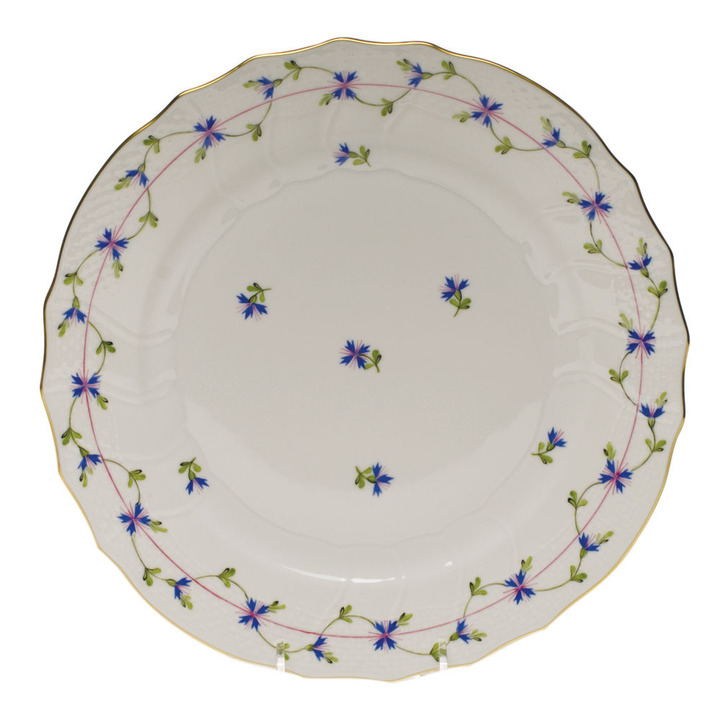
Prince William and Kate Middleton
Most likely, you’ve read more about Will and Kate than I have:

On the eve of their wedding, the Republic of Hungary presented 45 pieces of the new pattern based on Queen Victoria – called Herend Royal Garden Dinnerware — to the couple’s official representative, Lord-Lieutenant of Greater London Sir David William Brewer, who declared that Prince William, like his mother and Queen Victoria, holds Herend in high regard:
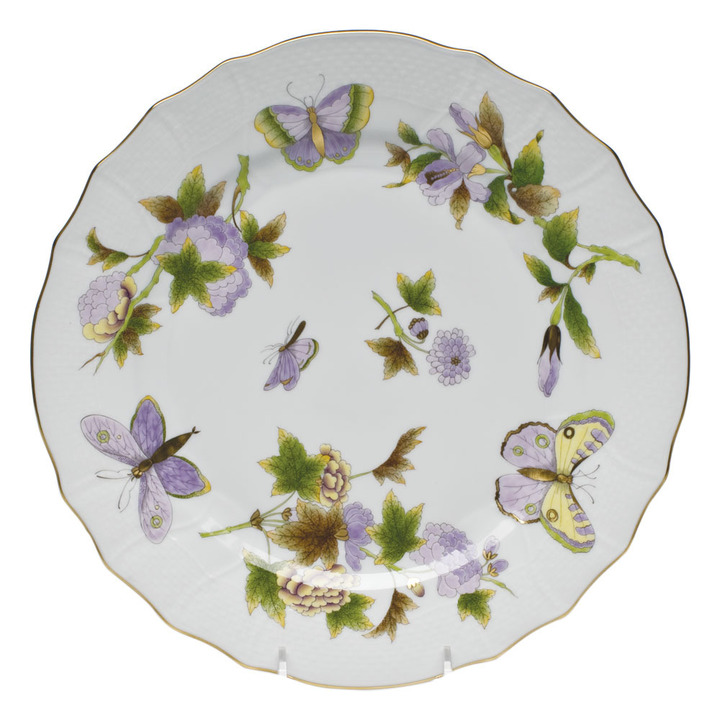
So perhaps, in the end, the royals aren’t so different from us after all: They have a love for beauty and tradition that we all do.
Well, maybe they’re just a little fancier.

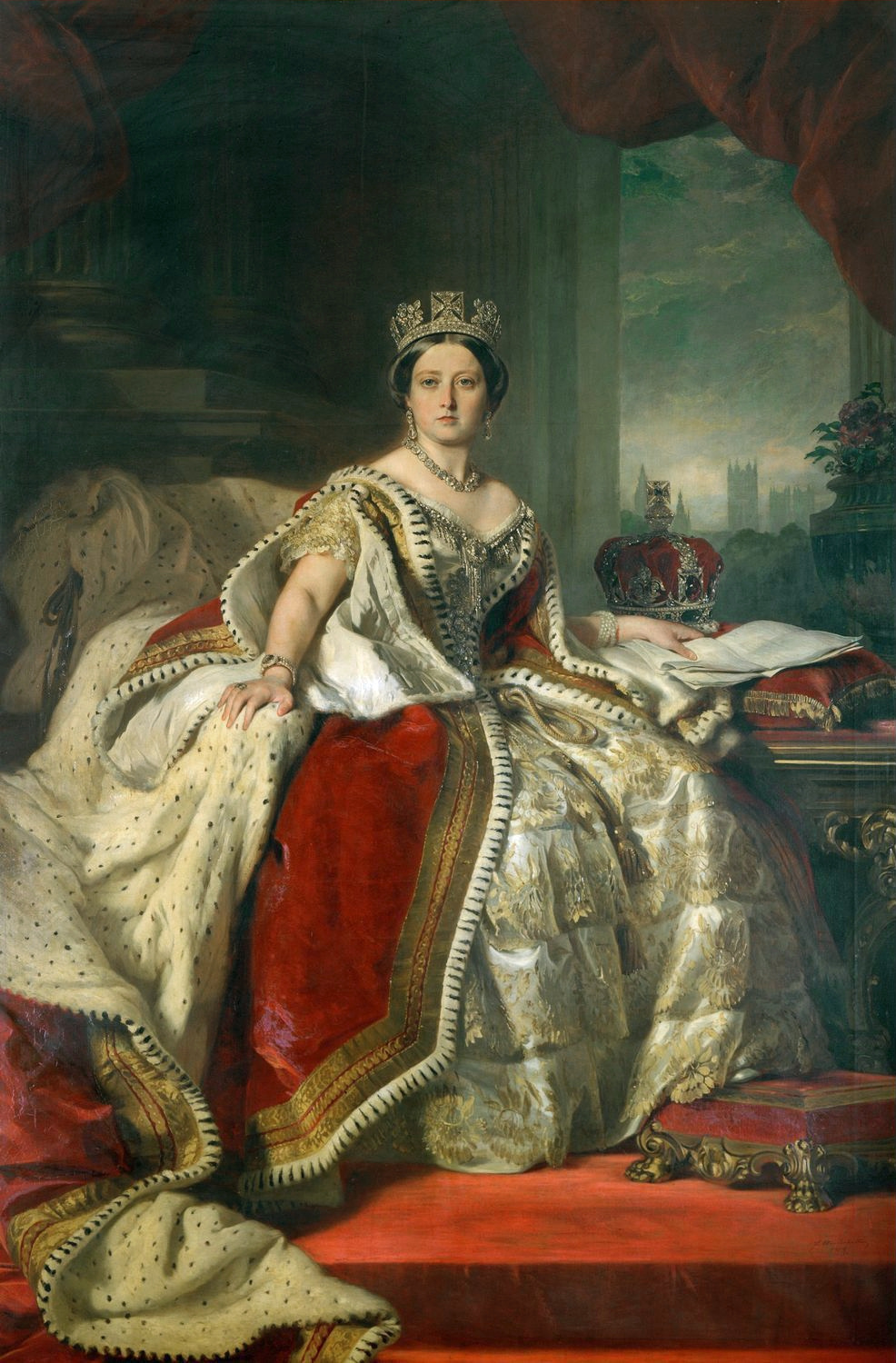
Comments
One response to “How to Dine Like Royalty from Queen Victoria to Lady Diana”
Let’s all hope that the younger generation will still appreciate a well set table with fine china ware, crystal, silver ware and linens!
To me it is the framing of any special day and indulging in the MOMENT together.
Mariette